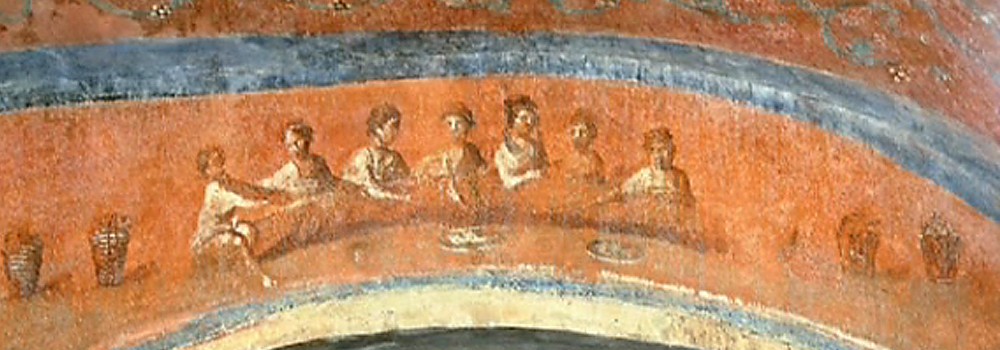Catacombs of Priscilla

Address
Via Salaria, 430 - 00199 Roma RM
Opening Time
From 1 May 2022: Tuesday to Sunday 09:00 - 12:00 / 14:00 - 17:00
Contact
Tel: +39 06 45428493
Email: catacombapriscillaseg@gmail.com
Sito web: www.catacombepriscilla.com
Sito web Museo di Priscilla: mupris.net
Weeky Closing
Monday, Christmas, 1 January, Easter
Annual closing
7-20 January 2025 / 19 August-2 September 2025
How to reach us
ATAC: 63, 92, 310 / Metro B1 (blu) Bus stop: Libia o S. Agnese/ Annibaliano
The noblewoman Priscilla was probably the one who founded the cemetery or donated the area on which it arose. As an inscription of the catacomb attests, Priscilla was related to the noble gens Acilia. We know from the historians of the time that Acilio Glabrione, a consul from 91 A.D., was condemned to death by Domitian, probably for being a follower of Christ.
The martyrs buried at Priscilla include the brothers Felix and Philip, who were probably martyred under Diocletian, together with their mother, St. Felicitas, and five other brothers: Alexander, Martial, Vitale, Silano and Gennarus. Many popes were also buried at Priscilla: Marcellinus (296-304), Marcellus (308-309), Sylvester (314-335), Liberius (352-366), Siricius (384-399), Celestine (422-434) and Vigilius (537-555).
On the upper level the most important nuclei of the catacomb are located. The cubiculum of Velata is decorated with paintings from the second half of the third century representing the marriage, motherhood and death of the deceased woman in the cubiculum. The large niche of Our Lady with the Baby and the prophet Balaam (according to the prevailing identification) pointing to a star, represents the most ancient image of the Mother of God in the West (230-240).
In the region of the central sandstone there is an ancient pozzolana quarry that was re-utilized in order to put poor loculi there closed by bricks with simple painted inscriptions. The cryptoportico with the Greek Chapel is a large underground masonry area that originated as a noble family burial ground that was later connected to the catacomb. The Greek Chapel owes its importance to the very ancient cycles of pictures decorating it (second half of the third century).
n the hypogeum of the Acili, which was originally a water tank, the inscriptions of gens Acilia have been found and exhibited. Inside Villa Ada the basilica is found which Pope St. Sylvester had erected near the tomb of Felix and Philip. Near the basilica, a museum has been made that collects hundreds of fragments of sarcophagi found during excavations on the perimeter of the catacomb.
To know more, buy Guide to the Catacomb of Priscilla


